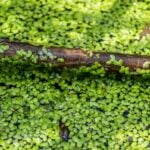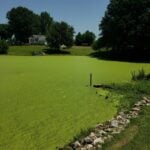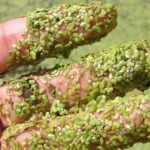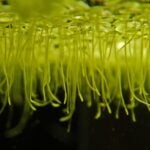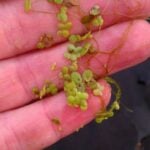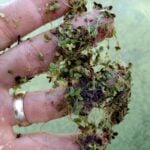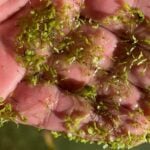Duckweed
Other Common Names: water lentil, giant duckweed, dotted duckweed, least duckweed, small duckweed
(Lemna)
Native
Duckweed is a small free floating plant that resembles clovers and has short roots.
Description
Duckweed grows on the surface of very still bodies of water.
Free floating, mature leaves look like small clovers with two to five fronds one-sixteenth to one-eighth of an inch long. The light green leaves curve slightly and are round or egg shaped; roots hang from the leaves and have three to eleven nerves.
Duckweed flowers and reproduces in groups, but the flowers can only be seen through magnification. Buds sink to the bottom in the winter and rise to the top through the development of air bubbles in the spring.
In fertile water, duckweed can double in numbers in just three to five days. Because it spreads so quickly across the water’s surface, oxygen depletion and fish kills can occur if duckweed covers enough of the surface.
Duckweed is often mixed with other floating plants, including watermeal, which is frequently mistaken for duckweed but treated differently. Proper identification can save time, effort, and money.
Management Options
Location
Duckweed can be found across the United States.
Propagation
buds



